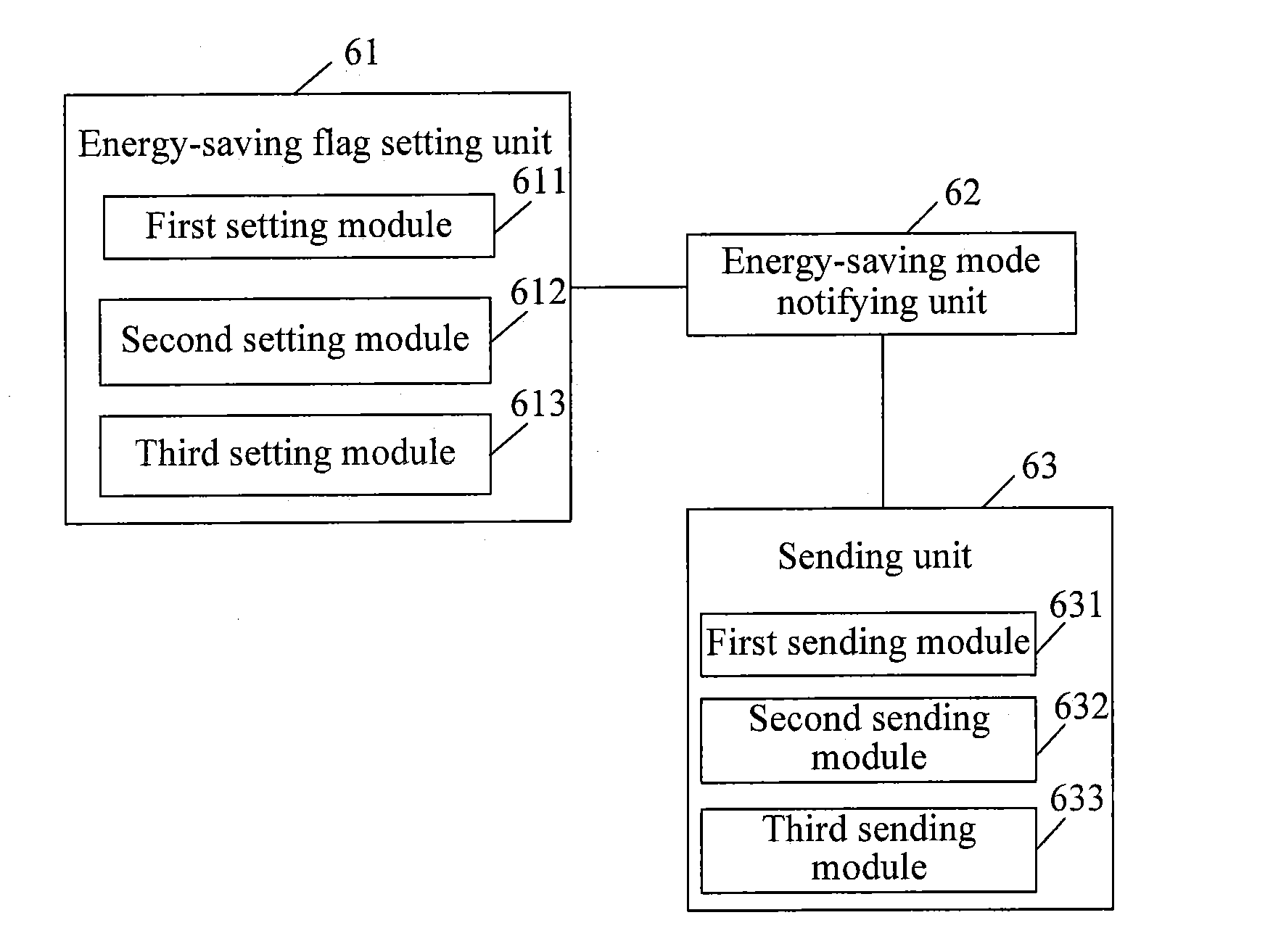Method for sending signals from base station and energy-saving base station
a technology of base station and energy saving, applied in the direction of frequency-division multiplex, instruments, high-level techniques, etc., can solve problems such as electric energy consumption, and achieve the effects of reducing antennas, reducing the energy consumption of base stations, and reducing the impact of servi
- Summary
- Abstract
- Description
- Claims
- Application Information
AI Technical Summary
Benefits of technology
Problems solved by technology
Method used
Image
Examples
embodiment 1
[0043]21. The network side triggers the base station to enter / quit the energy-saving mode.
[0044]The network side may trigger the base station to enter / quit the energy-saving mode according to the current cell load status, or network running status, or statistics in a period. For more details, see the method embodiment of the present invention described above.
[0045]22. When intending to enter the energy-saving mode, the base station sets an RS energy-saving indication in a system message, and broadcasts the energy-saving mode corresponding to the RS energy-saving indication to all UEs in the cell.
[0046]23. The base station uses the whole downlink bandwidth dynamically according to the amount of service data, and sends RSs only in the downlink bandwidth with data to be sent, so as to ensure data demodulation and channel quality measurement.
[0047]It should be noted that in another embodiment of the present invention, to ensure neighboring cell measurement, the downlink bandwidth used b...
embodiment 2
[0050]This embodiment differs from the first embodiment in that: when intending to enter the energy-saving mode, the base station uses a dedicated signaling such as reconfiguration signaling to set an RS energy-saving indication, and notifies the energy-saving mode corresponding to the RS energy-saving indication to all connected UEs in the cell; when intending to quit the energy-saving mode, the base station uses a dedicated signaling to cancel the RS energy-saving indication, and notifies the cancellation of the RS energy-saving indication to all connected UEs in the cell.
embodiment 3
[0051]31. The network side triggers the base station to enter / quit the energy-saving mode.
[0052]The network side may trigger the base station to enter / quit the energy-saving mode according to the current cell load status, or network running status, or statistics in a period. For more details, see the method embodiment of the present invention described above.
[0053]32. When intending to enter the energy-saving mode, the base station sets a data transmission bandwidth indication in a system message, and broadcasts the energy-saving mode corresponding to the data transmission bandwidth indication to all UEs in the cell.
[0054]The data transmission bandwidth indication may be expressed in a bitmap mode or a coding mode.
[0055]The granularity of the bitmap mode may be 1 RB or N RBs. N may be a constant stipulated by a protocol, or a variable. If N is a variable, N may be a value correlated with the cell bandwidth as stipulated in the protocol, or a value broadcast through the system messag...
PUM
 Login to View More
Login to View More Abstract
Description
Claims
Application Information
 Login to View More
Login to View More - R&D
- Intellectual Property
- Life Sciences
- Materials
- Tech Scout
- Unparalleled Data Quality
- Higher Quality Content
- 60% Fewer Hallucinations
Browse by: Latest US Patents, China's latest patents, Technical Efficacy Thesaurus, Application Domain, Technology Topic, Popular Technical Reports.
© 2025 PatSnap. All rights reserved.Legal|Privacy policy|Modern Slavery Act Transparency Statement|Sitemap|About US| Contact US: help@patsnap.com


